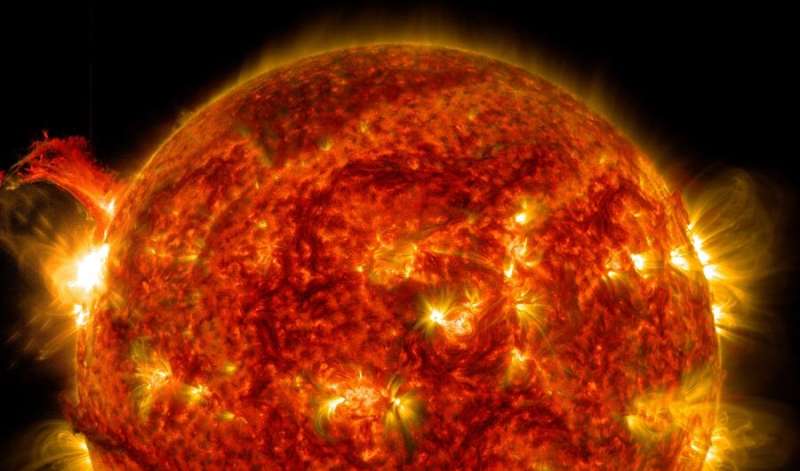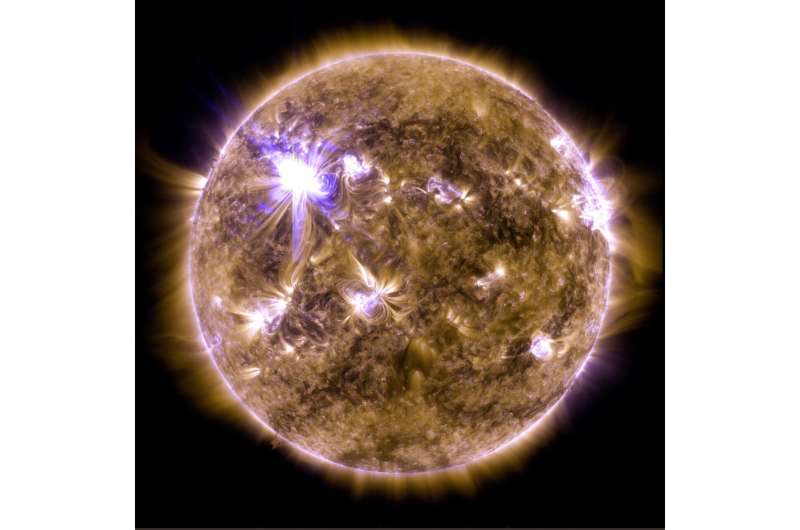New analysis method predicts disruptive solar flares

Solar flares—violent explosions on the surface of the sun—can send blasts of radiation hurtling toward Earth. While the planet's magnetic field protects humans on the surface, powerful solar flares can disable satellites, power grids and radio communications. But scientists aren't sure exactly what triggers solar flares, which makes it difficult to predict when one will occur. One theory suggests these massive explosions can be set off by small disturbances in the sun's magnetic field. Now, researchers have applied that theory to develop a novel method of predicting solar flares before they happen. This method could make the forecasting of solar flares more accurate and reliable than ever before.
Solar flares are intimately connected with the sun's magnetic field. While the lines of Earth's magnetic field are straight and static, running from the south pole to the north pole, the surface of the sun is a chaotic sea of ions and heat, making its magnetic field lines wildly more complicated.
Some models suggest that solar flares occur when many magnetic field lines merge into one far larger loop. This can be caused by something as small as a single cosmic particle striking the surface—if the conditions are right. The new prediction method uses satellite images to find the places on the sun where conditions are ripe for these magnetic reconnections, and therefore solar flares. These conditions can also suggest how big a potential flare can be.
"At some positions on a mountain, a small crack can trigger an avalanche," said Kanya Kusano, a professor of Earth and space science at Nagoya University in Nagoya, Japan, and lead author of the study. "But in other places, only a big crack will trigger it. We implement our theory to calculate how many magnetic reconnections, at a certain position, are required to trigger a solar flare."

Kusano's work analyzed satellite data from the nine biggest solar flares in the last two solar cycles, and found his method was able to predict seven of them from satellite images alone. He and his colleagues detailed their findings online July 30 in the journal Science.
More information: Kanya Kusano et al. A physics-based method that can predict imminent large solar flares, Science (2020). DOI: 10.1126/science.aaz2511
Journal information: Science
Provided by Inside Science, American Institute of Physics
This story is republished courtesy of Inside Science. Read the original story here. Used with permission. Inside Science is an editorially independent news service of the American Institute of Physics.





















